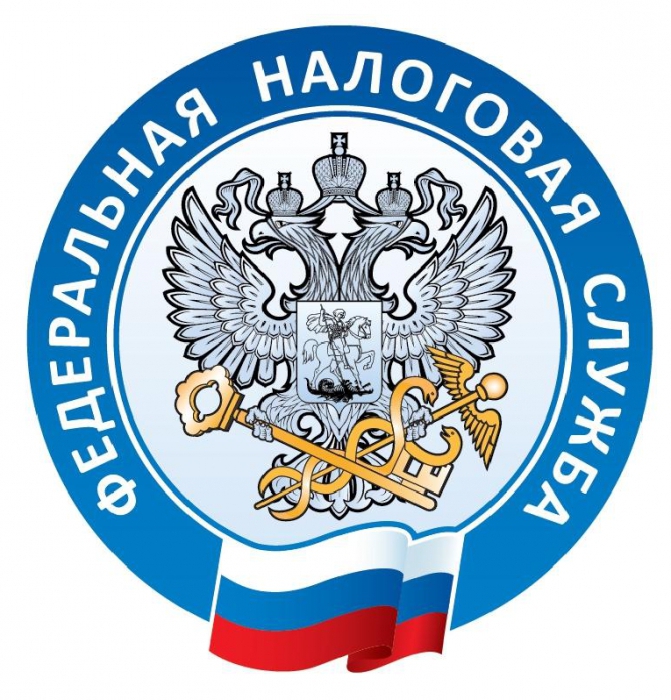Taxes in the traditional economic theory for Russia and the world are divided into direct and indirect. In many cases, the nature of the second type of fees remains controversial. What is the specificity of indirect taxes? Why are they often called the most important for the state?
Indirect taxes: what is it?
Indirect taxes are considered to be taxes that are formally levied by the state on entrepreneurs, but are actually paid by third parties (most often clients of companies, consumers of goods and services). These fees include VAT, excise taxes, various kinds of customs duties.
As a rule, indirect taxes are included in the selling price of a particular product or service. The seller or service provider, having received from a consumer or buyer a money transaction for a product or service, including VAT or some other kind of fee, deducts it in favor of the state in the prescribed manner.
And what is a "direct tax"?
Direct, in turn, is the tax that the entrepreneur pays directly to the treasury. What examples can be given? Among the most common direct fees is income tax (as well as its analogues in the framework of the simplified tax system, UTII and other similar regimes).
Of course, de facto this type of fees, as a rule, are laid by entrepreneurs in the same selling price of the goods, the cost of services. As well as many other indirect costs. Direct taxes type, however, can be paid in an "optimized" way. What can not be said about indirect fees. It may well turn out that the company will have real reasons not to pay a direct tax (for example, if de jure expenses exceed revenues).

In turn, VAT, duties and excise taxes fall into the treasury absolutely in any case. It can be said, regardless of the direct "will" of the entrepreneur, dependencies on the objective presence or absence of expenses. And therefore, according to some experts, VAT and similar charges are indirect taxes. They can be said to exist outside the control zone of the entrepreneur.
VAT
Indirect taxes include, as we said above, VAT. What is this collection? What is its nature? Value added tax, according to the generally accepted interpretation among Russian economists, is the amount to be withdrawn in favor of the state treasury, included in the selling price of goods or services. Value added is what brings business revenue and profit. The state taxes it accordingly, and this is the norm for most countries of the world.

VAT plays a huge role in terms of the formation of the state treasury. Similarly, other indirect taxes. But it is VAT that gives the Russian budget about 40% of revenues (in the federal part, in the consolidated part - about 20%). As such, direct taxes, if you look at the reports of the Ministry of Finance, bring several times less revenue to the treasury. Many experts are sure that indirect taxes are a strategically important component of the national economy.
The main criterion of VAT is that it is paid by each business entity that creates added value. That is, relatively speaking, IP Petrov AB, who owns a wholesale warehouse, buys pillowcases from IP Ivanov VG, who owns a weaving factory. The state at this stage will take the VAT from the manufacturer, that is, from the IP of Ivanov. In turn, IE Sidorov D.E., who owns a retail store, buys pillowcases from the warehouse of IP Petrov. At this stage, the state will take VAT from IP Petrova. Finally, IP Sidorov sells pillowcases to residents of his city at a retail price.At this stage, in turn, the state will impose VAT on Sidorov’s company.
At each stage of the “movement” of the pillowcase, some business generates added value. The factory is the one that compensates for the manufacturing costs and will give some profit, the wholesaler is the one that will give profitability to the business through the resale of the pillowcase. A retailer is one that can compensate for the purchase price and give a profit, in turn, to the store. At each stage, the state accrues an indirect tax on the goods paid by each entrepreneur.
VAT: payers, tax amount
In accordance with Russian laws, all business entities are obliged to pay VAT: IE, business entities. The basic rates at which indirect taxes are paid as part of VAT are as follows.
1. Goods exported are not subject to VAT (with the exception of certain types of raw materials).
2. Products related to food, as well as those whose final consumers are children, are subject to indirect taxes of the indicated type at a rate of 10%.
3. The print media, medicines (and other medical products defined by the list in chapter 21 of the Tax Code of the Russian Federation) - also 10%.
4. All other goods (services, works) are subject to VAT at a rate of 18%.
The frequency with which VAT is paid to the treasury depends on the amount of revenue (and this is regulated by relevant legislation). In some cases, the entrepreneur must transfer this tax once a month, in others - it is enough to do it on a quarterly basis (with the same frequency the tax return is also submitted to the Federal Tax Service).
Who does not need to pay VAT
Of course, there are types of businesses where indirect taxes are not paid within the framework of calculated VAT. First of all, these are any exporting companies. These are companies providing passenger transportation services. Such entities include companies providing housing and communal services. These are companies providing some types of financial services. Companies that sell products of their own production (mainly catering categories) should not pay VAT. This type of tax is not required to be transferred to the treasury by educational, research, experimental design, scientific organizations (receiving funding from the state budget), cultural institutions, and medical organizations.
The peculiarity of applying VAT in Russia is that the list of types of goods (services, works) exempted from this type of tax is approved at the federal level. In regions and municipalities, you cannot apply your own rules regarding this area.
Excise taxes
What other types of indirect taxes are important for the state? These include excise taxes. These are taxes that are necessarily included in the price of goods determined by a special list. Just as this happens with VAT, in fact, the buyer of goods is the payer of excise taxes. The main feature of this type of indirect taxes is that it is characteristic only for the production sphere. In some cases, excise taxes may apply to trading activities (for example, in cases where excisable goods imported into Russia for the purpose of subsequent sale with a mark-up).
Customs duties
Consider another type of indirect taxes - customs duties. This kind of fees are levied by specialized government agencies on the border of the country. The basis for calculating customs duties is the movement of various goods from one state to another. Rates for such fees always depend on the particular type of product, the country that produced it, and other conditions that characterize the economic policies of the authorities (or interstate political structures - such as, for example, the Customs Union).

Why do countries impose customs duties? Experts structure the goals of this type of fees in the following aggregate:
- more rational distribution of import volumes of specific groups of goods;
- maintaining a balance between export and import in various production areas;
- regulation of foreign exchange earnings of the business (and related expenses in foreign currency);
- creating an environment for the development of domestic production;
- stimulation of consumption of goods produced in a particular country (or domestic factories);
- protecting the state economy from global market factors.
Customs duties are classified as follows. There are so-called “ad valorem” fees. They are charged as a percentage of the value of the goods (which is determined by the customs authorities). There are "specific" duties. Their calculation is carried out on the basis of commodity units. There are also “combined” customs duties (combining the characteristics of the two previous types). As an additional criterion for the classification of fees, a sign of seasonality can be used. That is, duties can, for example, work in the summer and be canceled in the winter.
For purposes of customs duties can be anti-dumping or compensation (both types are designed to protect the national producer). Charges of the first type are introduced if the exporting company imports goods to Russia at a price lower than when sold on the national market, as a result of which the domestic producer is uncomfortable. Countervailing duties designed to counteract the activity of businesses that released their goods through subsidies (that is, they had a clearly more advantageous position compared to other manufacturers).
Another criterion for the classification of duties is the direction of movement of goods relative to the state border. There are, therefore, import (or import) fees. This is the most popular type of duties (both in Russia and in the world). A less encountered, but important from the point of view of the formation of the state economic strategy, type of fees is export. In Russia, it is used, in particular, in the export of oil and some other types of raw materials.
Import duties used within the framework of the Customs Union are unified. They are regulated through Unified Tariffs. This was done in order to integrate the economies of the countries that are part of the CU.
Indirect taxes in the vehicle
As you know, the Russian economy is closely integrating with Kazakhstan and Belarus. Too many norms are unified, including those that regulate indirect taxes. The Customs Union, an international economic structure formed by Russia, Belarus and Kazakhstan, requires the standardization of many business processes.
Having studied the rules governing the collection of indirect taxes in the CU, we can also get an idea of how the work with such fees is regulated in each of these countries separately, including in the Russian Federation.
Indirect taxes on exports
Absolutely all goods exported under the CU are not subject to VAT and excise taxes (we examined these types of indirect taxes above). True, on one condition - the fact of export must be documented. However, the CU countries did not come to such an agreement immediately.
For example, some regulatory documents that existed earlier contained provisions under which the zero rate on certain excise taxes did not apply to products whose indirect tax upon import is zero. Suppose coffee was exported from Belarus to the Russian Federation. If the import duty on this product in the Russian Federation were equal to zero, then the Belarusian entrepreneur would pay the appropriate fee.
Import Indirect Taxes
Another question is what indirect taxes do the import of goods in the CU countries imply? According to existing agreements between Russia, Belarus and Kazakhstan, the functions of their collection lie with the structures registered in the state where the goods are imported. Regarding the Russian Federation, a detailed list of products that are not subject to taxation upon import is contained in Article 150 of the Tax Code.
Indirect taxes for services and work
Having considered the features of the collection of indirect taxes specific to goods, we turn to aspects related to work and services. The main feature of the legislative regulation of this process in the Customs Union is that the functions of collecting the appropriate fees, as well as when importing goods, are assigned to the structures of the state where the work and services are provided. The legislation of the CU states in this regard, as experts note, is generally unified. Above, we have listed the main types of services that are not taxable under VAT. In Belarus and Kazakhstan, their list is predominantly identical to that established for Russian organizations.
Indirect Tax Features
What are the key features of taxes classified as indirect? First of all, it is the speed of transfer to the treasury. As soon as the entrepreneur has sold the goods or rendered the service, the tax amount due is paid to the accounts of the Federal Tax Service as soon as possible. If we take VAT, then, depending on the size of the proceeds, the frequency of transfer is one quarter or a month.
In comparison with the terms within which indirect taxes are transferred to the budget, income tax is transferred to the treasury, as a rule, less often. Reporting periods for each type of fee also differ. For example, a tax return on certain types of indirect taxes (the same VAT) is filed once a quarter. A similar document for the simplified tax system, for example - once a year.

Although, as many experts note, this factor, with the modernization of Russian legislation in recent years, is gradually becoming less and less significant, since the actual terms of payment of all types of fees are unified. In certain cases, the business must transfer the same income tax as often as VAT, that is, once a month.
Another feature of VAT and any other tax that relates to indirect taxes is its high collection. Due to the obligatory nature of VAT and the ease of monitoring of trading operations, almost always upon the sale of goods or the provision of services for which a VAT rate has been established, this type of fee is transferred to the treasury.
In turn, the amount of many direct taxes calculated by businesses is often underestimated (or even completely reduced to zero). Many businesses include “indirect” costs in the cost base (which largely affects the final income tax). From the point of view of the law, they completely fall under the criteria of the Federal Tax Service. As a result, net business profits are minimized. It turns out that there is nothing to take a direct tax from. As a result, collection is lower than for VAT.

Indirect taxes are usually levied on the sale of goods or the provision of mass services. Namely: with the sale of food, electronics, hairdressing services, salons, etc. Businesses operating in these areas, as a rule, always have clients and financial turnover, regardless of the economic situation in the country and in world markets. And this means that the state will constantly receive something in the treasury. That is why VAT is one of the main mechanisms for generating budget revenues.
Many economists believe that indirect taxes are one of the most effective channels for conducting state economic policy. Due to what signs? The state may, in its interests, influence the demand for a particular product or service. In some cases, the authorities may, for example, be interested in reducing the consumer interest in imported clothing (in order to stimulate the production of textile products within the country). As a result, a special kind of import duty can be established.
The regulation of the economy through indirect taxes, as many experts believe, is a process in which there is minimal likelihood of harming the interests of businesses (as if government intervention was carried out by adjusting rates on direct fees).Some economists note: VAT rates and excise taxes are “net” indirect taxes that are independent of the entrepreneur’s business strategy. Companies are free to work on increasing turnover and lowering costs, knowing that the state will not intervene in this process.








